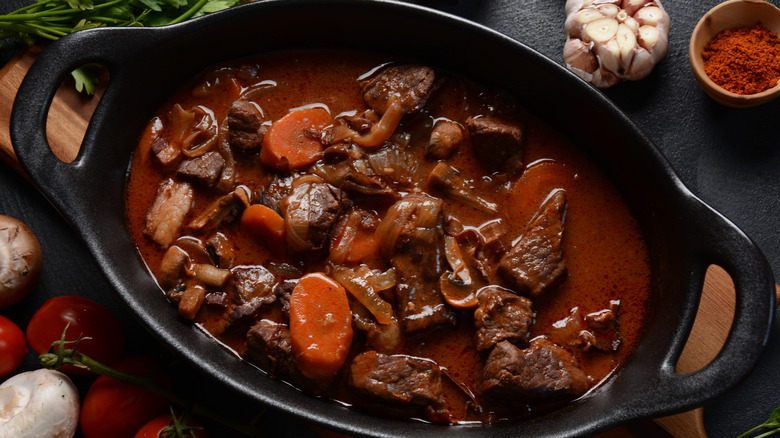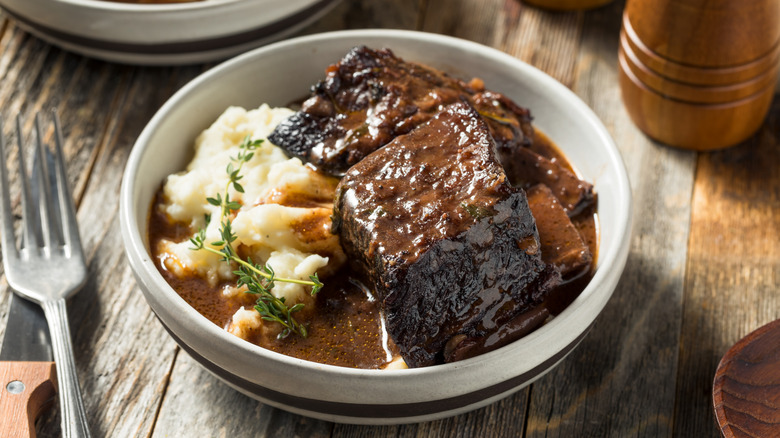Why The Amount Of Liquid Is Important When Braising A Cut Of Meat
When it comes to braising, regardless of the type of meat you are using, the amount of liquid you use is of vital importance. When meat is braised, it is cooked in a moist environment for a long period of time over low heat. This method works particularly well with tougher cuts of meat, like beef short ribs or lamb shoulder because the lengthy exposure to the cooking liquid works to break down the sinews and cartilage, making the finished product wonderfully tender. Typically the best type of liquid to use is wine, stock, or even milk.
The liquid not only imparts flavor but serves as the base on which sauce will be rendered once the meat is finished cooking. This is crucial because if there is not enough liquid left over by the time the meat is done, you are going to have problems building your sauce. Unlike soups and stews, in which the meat is completely submerged during cooking and served within its created broth, braised meat is often served alongside other side dishes and typically comes with sauce derived from the cooking juices. So if the sauce isn't present, you're missing an important component of the meal.
How much liquid is enough?
There is a fine line to walk between too much and not enough liquid for braising. The general rule is, you want enough liquid to cover at least 1/2 to 3/4 of the meat you're braising. Remember, braising is not stewing. That method involves smaller morsels of meat that are cooked in total submersion. The braising liquid needs to fill the pan enough to cover most of the meat, which gives it time to break down the sinews and connective tissue.
However, if you use too much liquid, you run the risk of diluting flavor and having a runny sauce. Remember, that as the meat is cooking, it will release about a third of its own fats and liquids, thereby adding even more liquid and flavor. Once the meat is finished, a sauce can be made from the braising liquid. It will need to be reduced significantly in order to maximize flavor and create a thicker consistency.
In an uncovered cooking vessel, the sauce reduction will take about an hour or two. Your patience will be rewarded with a rich, extremely flavorful sauce that will serve two purposes. One, it will keep your meat tender and moist. Two, it will bring a complexity of character to your dish. To get an even more robust flavor, try keeping the meat together with the sauce and storing it in the fridge, where the flavors will deepen and mature overnight.

